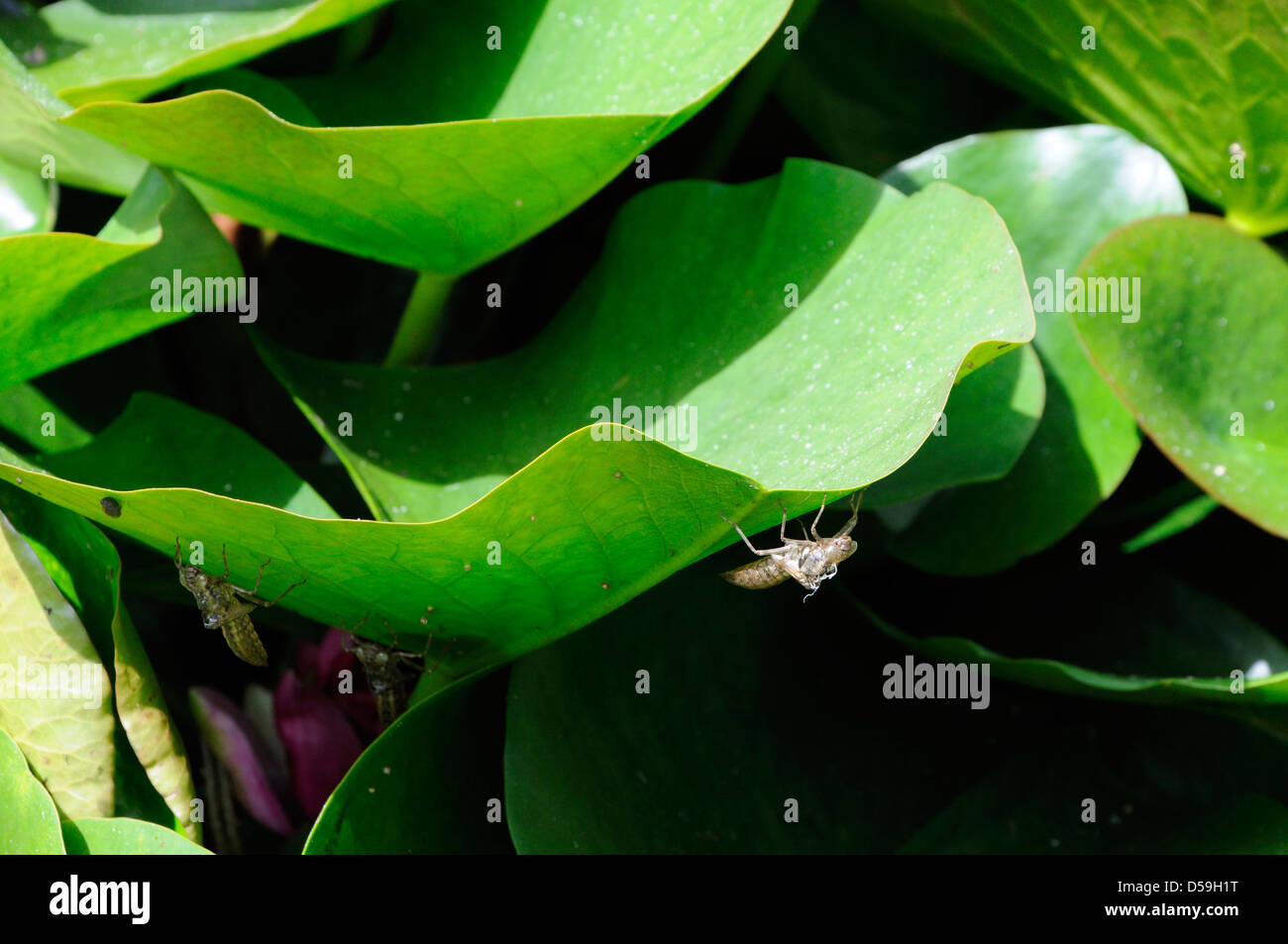

Some dragonflies with a short larvae cycle (a few weeks) also can live in rain puddles. Where do dragonflies live? Dragonflies start their life in water, therefore they are often found near water: ponds, lakes, canals, streams, rivers and swamps. Huge dragonflies, with wing spans up to 30 inches, were flying when dinosaurs roamed the earth. How long have dragonflies been around? About 300 million years. Only one lense can see more sharply, though only front and sides. How strong are their eyes? A dragonfly can see all the way around itself, because its eyes have about 30,000 lenses. What is the smallest dragonfly? Several dragonflies in the genus Agriocnemis have a wingspan of just 17-18 mm. Extinct fossil dragonflies with wingspans up to 70-75 cm have been identified. The bulkiest known dragonfly is Petalura ingentissima from Australia, with a wingspan up to 16 cm. What are the biggest dragonfly and damselfly? The Megaloprepus coerulatus damselfly of Central America has a wingspan up to 19 cm. When they are resting, the wings are usually spread. The wings do not narrow at the base the forewings and hindwings differ in shape. Their eyes touch near the top of their head. Most species hold their wings above the abdomen when they are resting. How can I tell a dragonfly from a damselfly? Damselflies are usually slim, their forewings and hindwings narrow at the base and have similar shapes, and their eyes are widely separated. In the larval stage, they are preyed on by fish, frogs, toads and newts, and other water invertebrates. What enemies do dragonflies and damselflies have? Birds, spiders, frogs, larger dragonflies.

Check out our dragonfly life cycle article for more information. How long do they live? Most temperate-zone species live as adults less than a month, though some species can live as long as six months. Click here for resources to identify dragonflies in your neighborhood. The legends and folktails will surprise you! How many kinds of dragonflies and damselflies are there? Currently about 5000 species of dragonflies and damselflies are known experts guess that there are probably between 55 species in total. So the Romanian Devil's fly has become dragonfly in English! Learn more about some really cool dragonfly symbolism in Europe and Japan. The word drac, from the Latin draco, means "dragon" or "devil" in several languages, such as Catalan and Romanian. Learn more about this transformative process that has withstood the test of time, 300 million years and counting! What is the origin of the word "dragonfly"? The origin of the English term "dragonfly" is believed to come from the Romanian language where the word for dragonfly translates to Devil's Horse or Devil's fly. Read more about dragonfly wings > What is the life cycle of a dragonfly? Dragonflies embark on a fasinating journey from the egg stage to the adult stage.

However, dragonflies have two sets of wings, so they don't have to beat them so fast. Read more about dragonfly flight > How fast do they beat their wings? Not fast, about 30 times per second (compared to bees, for example, at 300 beats per second). The maximum speed varies a lot between different species, with bigger dragonflies generally flying faster than smaller ones. Read more about dragonfly mating > How fast can a dragonfly fly? It is estimated that the top speed for a dragonfly is between 36 and 54 km/h (22 to 34 m.p.h.). However, dragonflies must be doing something right, as they have existed for over 300 million years. In fact, it is a bit violent and somewhat unsettling. Read more about dragonfly feeding behavior > How do dragonflies mate? Romance and courting have no place in the dragonfly mating ritual. Usually they eat bloodworms or other aquatic insect larvae. Larger dragonfly larvae sometimes eat small fish or fry. The larvae, which live in water, eat almost any living thing smaller than themselves. They also will take butterflies, moths and smaller dragonflies. Here are some common questions about dragonflies: What do dragonflies eat? Adult dragonflies mostly eat other flying insects, particularly midges and mosquitoes.


 0 kommentar(er)
0 kommentar(er)
